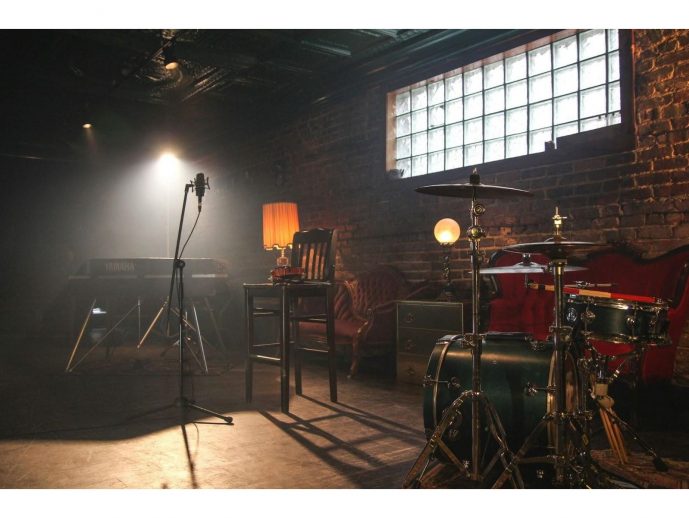Categories more
- Adventures (17)
- Arts / Collectables (15)
- Automotive (37)
- Aviation (11)
- Bath, Body, & Health (77)
- Children (6)
- Cigars / Spirits (32)
- Cuisine (16)
- Design/Architecture (22)
- Electronics (13)
- Entertainment (4)
- Event Planning (5)
- Fashion (46)
- Finance (9)
- Gifts / Misc (6)
- Home Decor (45)
- Jewelry (41)
- Pets (3)
- Philanthropy (1)
- Real Estate (16)
- Services (23)
- Sports / Golf (14)
- Vacation / Travel (59)
- Watches / Pens (15)
- Wines / Vines (24)
- Yachting / Boating (17)
The Evolution of Musical Notation: From Neumes to Modern Sheet Music
Published
02/20/2025Ancient Origins: The Birth of Neumes
- Neumes were significant: they were the signs for both pitch changes and singers' memorization.
- The changes brought by them were the transition from the oral tradition to the written ones, thus the songs were saved for our future generations.
- The collection of the talented neumes contains unique ones and thus gives an idea about the early music tradition.
Transition to Staff Notation: Key Developments of the 11th Century
The staff notation system, which was developed during the 11th century by Guido of Arezzo, was the beginning of a paradigm shift against the old ways of music publishing and consequently setting a new trend. Guido of Arezzo, a genius type of monk reconstructed the four-line staff, which was the first step in changing the music picturing. It was through this change that Guido became able to set the pitches accurately, which was not possible with just neumes. The hexachord of the Guido system, which is also known as the "Guidonian Hand," featured a further aid for singers as it made sight-reading and pitch recognition easier, thus enabling a wider population to benefit from musical education there.
The staves, this horizontal line, which was a pitch reference for the notes that were placed on or between these lines that were explanatory for the exact tones. The rapid dissemination of more complex polyphonic music, which in turn, helped the creation and collaboration of different composers throughout Europe, was made possible by the simplicity of this system. An interesting fact is that Guido's system was used in monastic schools, which directly led to the creation of more sacred and secular music pieces that could be preserved and transmitted. Through the staff notation, which made it possible for the composers to write their music, it became possible for the visionary thinkers like Hildegard of Bingen and Léonin to create intricate masterpieces that have survived resiliently through the ages, documented carefully for future generations.
The Rise of Mensural Notation: 14th to 16th Century Innovations
- Note Shapes of Different Types: The use of multiple note shapes that figured in the mensural notations for indicating duration flagged off composers creativity on the rhythmic machines.
- The Era of Time Signatures: The time signatures that were introduced during this era laid the groundwork for increased clarity and consistent formats in the different compositions.
- The Polyphonic Works: The technological achievements of the time have put into practice the polyphonic works, among them, one can mention the famous composer Josquin des Prez.
The Baroque Era: Impact of Printing on Music Notation
The Baroque Period's invention of printing was a groundbreaking turning point in the development of music notation, which, in turn, altered basically the ways of music creation and dissemination. The musical movable type printing press, which was invented and developed by Ottaviano Petrucci in the early 16th century, was the first step in the democratization of music, which was accessible only to a small number of people across the world until then due to their quite expensive handwritten copies. In the period of Baroque, this printing technology had already developed thus facilitating prospection of the works of composers like Johann Sebastian Bach, Georg Friedrich Handel, etc.
The effects were terrible: imported music led to the widespread use of the standard notation, thus achieving the notation consistency across the area and performers, which was essential in such a period when the music was so complicated and full of various parts. It was such publishers as Estienne Roger in Amsterdam who reached the most beneficial results out of this and became the center of the European musical network by offering their clients a catalog with more than 800 works by 1721.
The printing revolution was not just a means of preserving music but was equally a means of creating music. Hybrid styles are the conceptual reproduction of the creative act of someone who gives the donor? For instance, the Italian operas that served as the primary model for the German composers and vice versa. The main reason it is much easier for the students to acquire the new vocabulary through the lyrics' interpretation is that music scholars of the contemporary movement have had the opportunity to perform pieces by only composers. As a result, the Baroque period, which was the era of music and the arts, was not just about technical innovations but also about the thought of music being a universal language.
19th Century Transformations: The Standardization of Modern Sheet Music
- The Industrial Revolution's Influence: One of the greatest effects of industrialization is the enhancement of the printing devices and the establishment of the distribution network which made music available to almost everyone. As a result, the number of both amateur and professional musicians increased tremendously.
- Ability's Archival Masterpieces: The exhibition showcases first-time prints of such authors as Beethoven and Chopin, so that the audience could figuratively touch the progress of music.
The Digital Age: Technological Advancements in Notation
The digital age has been propelled by technological advances, which have taken music transcription to a new level with the introduction of tools like software Finale and Sibelius. They are platforms that include the equation program that you can use to view and play the score of the music on a computer; therefore, this work becomes so easy to carry out as compared to printing scores. Statistics from a survey conducted in 2023 that showed 85%+ of the respondents confirmed that Western classical music publishers have digital transformations of the collections which published them thus being the reason for a website interface change that is overwhelming. Just as this, using artificial intelligence has allowed the process of notating in a live performance stream thereby linking the two locations. The fresh digital age does not just make the process of turning music for the masses easier but also allows the collaboration and new music creations through the digital space.
Conclusion: Reflection on Centuries of Musical Notation Evolution
This journey from the initial music notations like the neumes to the high-tech digital platforms of today is a real exhibition of the wealth of the people who lived and created through the ages and cultures. The neumes that date back to the 9th century are the first-ever memory ais which later were the basis for the writing down of melodies thus preserving them. The provision of the staff notation by Guido of Arezzo in the 11th century, music composition, and pedagogy attained to a higher level, so it was both obligatory and consequent to the development of variations in the musical form. The mensural notation for which the 14th to 16th centuries have been celebrated became the chief cause of the rhythm getting more complex coincidentally with polyphonic masterpieces which were at first simple to write but were then intricate.
The Baroque period was known for its development of printing technology that not only made music available to many but also became one of the main reasons for these technologies to have an enduring effect and further dissemination. The 19th century saw the standardization of printing materials and further developments in technology, which created today's universal sheet music format. The digital age stands as a testimony that music notation is redefined, again, by technological innovations that are so accessible, and making global collaboration a reality.
The steps towards the popular system of music notation give evidence to the fact that man persists in making an all-out effort to develop. The activities of talented people help to preserve this story so that it will be alive and impactful for the generations to come.

















